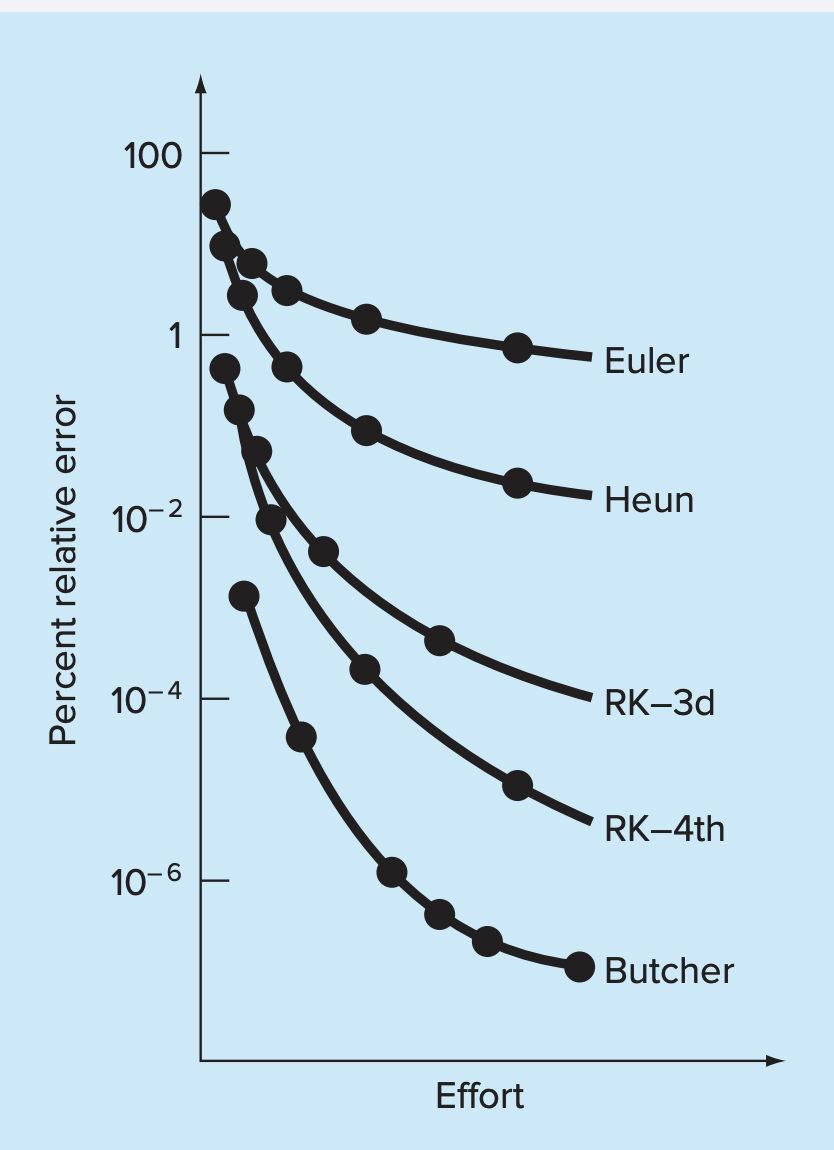Runge-Kutta methods are the most widely used to achieve high accuracy solutions. There are several variations, but all use the general form:
where is called the increment function, which is the representative slope over the interval .
is expressed as:
where the values are constants and the values are:
values come from the Taylor Series. values are recurrence relationships ( appears in the function, etc). These values are just function evaluation, so they are computationally inexpensive.
1st Order
The 1st-order Runge-Kutta method () is just Euler’s Method. It has error of .
If we have , we see that:
2nd-order
For second order Runge-Kutta, we would have:
There are several different 2nd-order RK methods with different values.
Finding Runge-Kutta Constants with Taylor Series
Values for are determined by setting the equation for equal to a Taylor Series expansion to the second-order term. For the second-order case, we would have:
where must be determined by chain-rule differentiation. Solving this gives:
Based on these, we can then find some constant values.
Heun’s Method with a single corrector uses , such that and , giving:
where:
The Midpoint Method uses
4th-order Runge-Kutta methods
4th-order Runge-Kutta methods are the most common/popular, probably because they have a good balance between accuracy and complexity.
They are written as:
such that , and:
Basically, each of the values represents a slope, which are averaged/weighted to determine the representative slope .

Comparison of Methods
